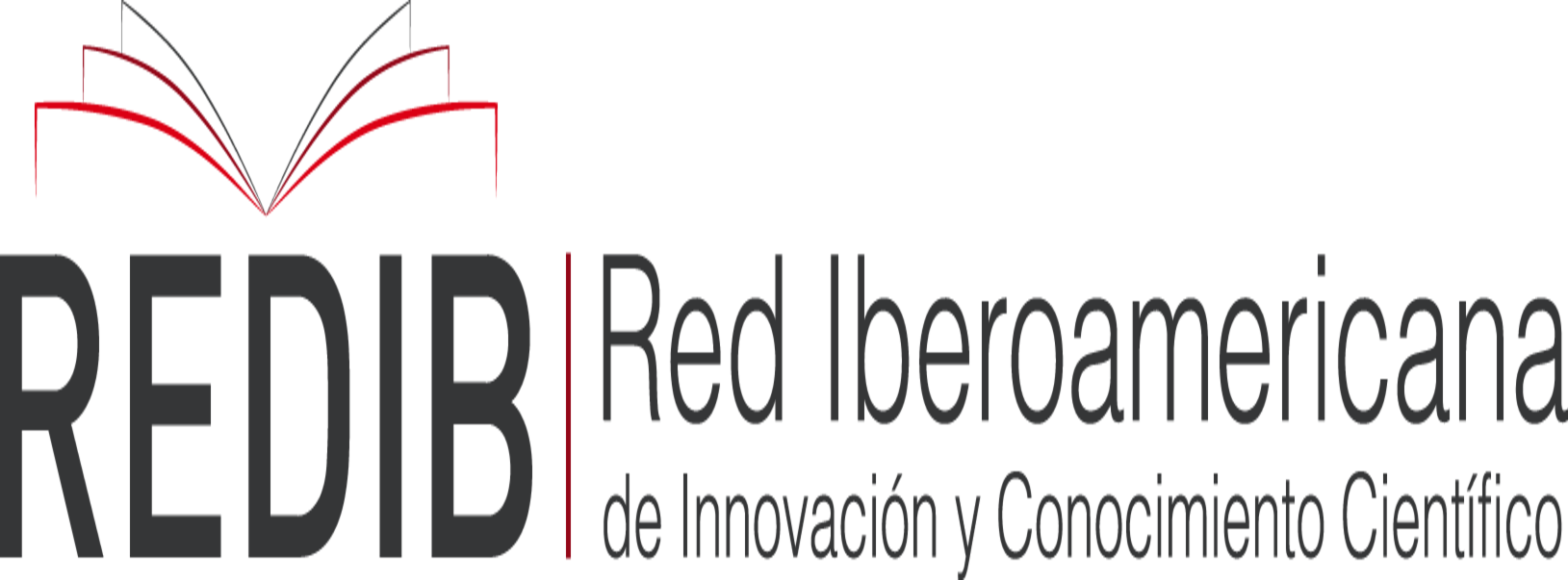Micoherbicida asociado a la mancha foliar de Chenopodium album L.
DOI:
https://doi.org/10.17268/manglar.2020.040Abstract
The objective this research was identify the fungi associated with the Chenopodium album leaf spot. Samplings were carried out at Universidad Autonoma Agrarian Antonio Narro in a manner directed towards the weeds (10 plants) that showed signs and symptoms of this disease (pycnidia and a yellow halo on the leaves) and were later taken to the phytopathology laboratory for isolation and identification. The weed identified by morphological criteria. Pathogen was identified by morphocultural of 100 conidia criteria using AxioVision Release 4.5 software. The purification of the isolates was performed by hypha tip in PDA. Macrophoma sp. was identified damaging the weed C. album whit conidia ellipsoidal to subglobose, of 18.21 µm length and 2.56 µm width. Therefore a future investigation of this pathogen and host is recommended.
Downloads
References
Agrios, G.N. 1988. Plant Pathology. 3 ed. Academie Press, Inc., San Diego, CA. 803 pp.
Ahmad, S.; Iqbal, S.H.; Khalid, A.N. 1997. Fungi of West Pakistan. Mycological Society of Pakistan, Department of Botany, University of the Punjab, Lahore 54590, Pakistan.
ANAVMP - Sistema Nacional Argentino de Vigilancia y Monitoreo de Plagas. 2020. Macrophomina phaseolina. Consultado 19 oct. 2019. Disponible en: https://www.sinavimo.gov.ar/plaga/macrophomina-phaseolina
Akbar, M.; Iqbal, MA.; Khalil, T. 2017. Isolation and characterization of natural herbicidal compound from Drechslera rostrata. Planta daninha 35: e017163780
Aneja, K.R.; Kumar, V.; Kumar, P.J.; et al. 2013. Potential Bioherbicides: Indian Perspectives. En Salar R.K et al. (ed.), Biotechnology: Prospects and Applications, Springer. India.
Aper, J.; De Cauwer, B.; De Roo, S.; et al. 2014. Seed germination and viability of herbicide resistant and susceptible Chenopodium album populations after ensiling, digestion by cattle and manure storage. Weed Res. 54: 169-77.
Bailey, KL.; Pitt, WM.; Falk, S.; et al. 2011. The effects of Phoma macrostoma on nontarget plant and target weed species. Biological Control 58(3): 379-386.
Barnett, L.H.; Hunter, B.B. 2006. Illustrate genera of imperfect fungi. Minnesota, The American Phytopathology Society Press. 200-220 pp.
Barton, J. 2005. Bioherbicides: All in a day’s work for a superhero. What’s New in Biological Control of Weeds 34: 4-6.
Brun, T.; Rabuske, JE.; Todero, I.; et al. 2016. Production of bioherbicide by Phoma sp. in a stirred-tank bioreactor. 3 Biotech 6: 230.
Chin, A. 1995. Evaluation of Macrophoma sp. as a potential mycoherbicide for the control of Amaranthus retroflexus L. (Redroot Pigweed) Master of Science. Departmenl of Plant Science. Macdonald Campus of McGiII University. Bellevue, Québec, Canada. 49 pp.
Cimmino, A.; Andolfi, A.; Zonno, MC.; et al. 2013. Chenopodolin: a phytotoxic unrearranged ent-pimaradiene diterpene produced by Phoma chenopodicola, a fungal pathogen for Chenopodium album biocontrol. Journal of Natural Products 76(7): 1291-1297.
Dagno, K.L.R. 2012. Present status of the development of mycoherbicides against water hyacinth: successes and challenges. Biotechnol. Agron. Soc. Environ. 16(3): 360-368.
Dutta, W.; Durga, R.; Puja, R. 2015. Molecular characterization and host range studies of indigenous fungus as prospective mycoherbicidal agent of water hyacinth. Indian Journal of Weed Science 47: 59-65.
Evidente, A.; Andolfi, A.; Vurro, M.; et al. 2000. Trans-4-aminoproline, a phytotoxic metabolite with herbicidal activity produced by Ascochyta caulina, Phytochemistry 53(2): 231-237.
Gadermaier, G.; Hauser, M.; Ferreira, F. 2014. Allergens of weed pollen: an overview on recombinant and natural molecules. Methods 66(1): 55-66.
FAO – Food and Agriculture Organization. 2020. V. Tecnología del cultivo. Enfermedades causadas por hongos. Disponible en: http://www.fao.org/tempref/GI/Reserved/FTP_FaoRlc/old/prior/segalim/prodalim/prodveg/cdrom/contenido/libro01/Cap5.htm
Frinking, H.D.; Linders, E.G.A. 1986. Una comparación de dos patosistemas: mildiú velloso en Spinacia oleracea y en Chenopodium álbum. Holanda J. Plant Pathology 92: 97-106.
Harding, D.; Raizada, M. 2015. Controlling weeds with fungi, bacteria and viruses: A review. Frontiers in plant science 6: 659.
Jeremy, B. 2005. El micoherbicida está de vuelta. El congreso de Estados Unidos declaró la guerra biológica a Sur América en una nueva propuesta. Disponible en: http://www.mamacoca.org/docs_de_base/Fumigas/Bigwood_el_ micoherbicida_esta_de_vuelta.htm
Jiang, WY.; Shen, ZB.; Cai, YN.; et al. 2019. Primer informe de la mancha foliar de Chenopodium album causada por Fusarium equiseti en China. Disponible en: https://apsjournals.apsnet.org/doi/10.1094/PDIS-06-19-1131-PDN
Kaur, M.; Kumar, V. 2019. Studies on various histopathological parameters to evaluate the biological control potential of Alternaria macrospora MKP1 against Parthenium weed. Department of Microbiology, Kurukshetra University Kurukshetra, Haryana, India, 136119.
Nawaz, A. 2016. Farooq M. Manejo de malezas en sistemas de producción de conservación de recursos en Pakistán. Crop Protec. 85: 89-103.
Paciolla, C., De leonardis, S., Zonno, M., et al. 2016. Antioxidant response in Chenopodium album elicited by Ascochyta caulina mycoherbicide phytotoxins. Phytopathologia Mediterranea, 55(3): 346-354.
Qing-yun, G.; Liang, C.; Hai-xia, Z.; et al. 2019. Herbicidal activity of Aureobasidium pullulans PA-2 on weeds and optimization of its solid-state fermentation conditions. Journal of Integrative Agriculture 19(1): 173-182.
Sánchez, E.M.; Espitia, R.E.; Osada KS. 1991. Etiología de la mancha negra del tallo (Macrophoma sp.) en el Amaranto (Amaranthus sp.). p. 67. En: Primer Congreso Internacional del Amaranto. Septiembre 22-27. Oaxtepec, Morelos, México.
Sands, D.C.; Pilgeram, A.L. 2009.Métodos para seleccionar agentes de biocontrol hipervirulentos de malas hierbas: por qué y cómo. Pest Manag. Sci. 65: 581 - 587.
Siddiqui, I.; Rukhsana, B.; Arshad, J. 2009. A new foliar fungal pathogen, Alternaria alternata isolated from Chenopodium album in Pakistan. Pakistan Journal of Botany 41: 1437-1438.
Todero, I.; Confortin, T.C.; Soares, F.; et al. 2018. Concentration of metabolites from Phoma sp. using microfiltration membrane for increasing bioherbicidal activity, Environmental Technology 40(18): 2364-2372
USDA- Departamento de Agricultura de los Estados Unidos. 2020. Biblioteca Nacional de Agricultura. Disponible en: https://agclass.nal.usda.gov/mtwdk.exe?k=2007es&l=115&w=45192&s=5&t=2
Vibrans, H. 2011. Taller de identificación de malezas. Disponible en: https://es.scribd.com/document/431221502/Taller-de-Identificacion-de-Malezas
Villareal, J.A. 1983. Malezas de Buenavista, Coahuila. México: Universidad Autónoma Agrícola Antonio Narro, Buenavista, Saltillo, México, 271 pp.
Vurro, M.; Chiara, ZM.; Evidente, A.; Andolfi, A.; PAsquale, M. 2001. Enhancement of efficacy of Ascochyta caulina to control Chenopodium album by use of phytotoxins and reduced rates of herbicides. Biological Control 21(2): 182-190
Watson, AK.; Wymore, LA. 1990. Identifying limiting factors in the biocontrol of wecds. pp. 305-316 ln Baker. R.R. and Dunn. P.E. (eds.), New Directions in Biological Control: Alternatives for Suppressing Agricultural Pests and Diseases. Alan R. Liss Inc., New York, NY.
ZEISS, 2020. Programa AxioVision. Disponible en:https://www.micro-shop.zeiss.com/en/us/system/software+axiovision-axiovision+pro gram-axiovision+software/10221/
Downloads
Published
Issue
Section
License

Manglar is an open access journal distributed under the terms and conditions of Creative Commons Attribution 4.0 International license









